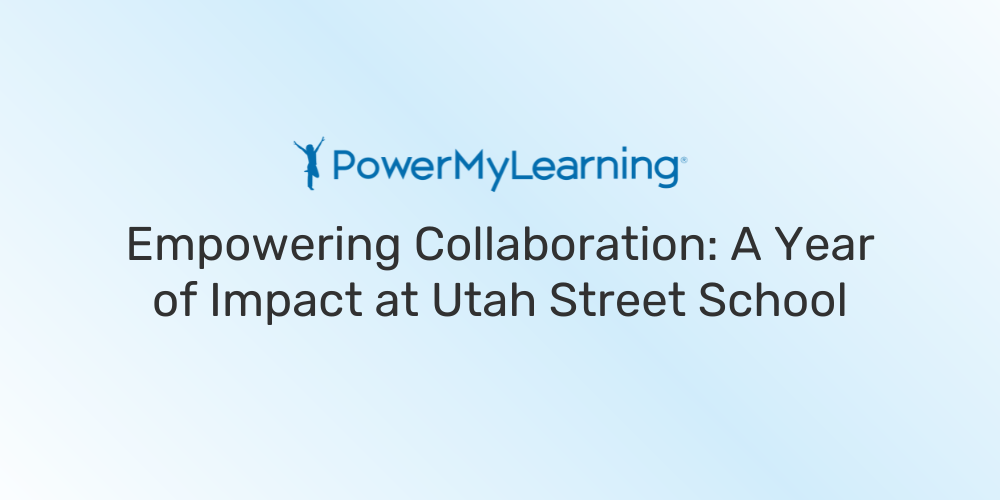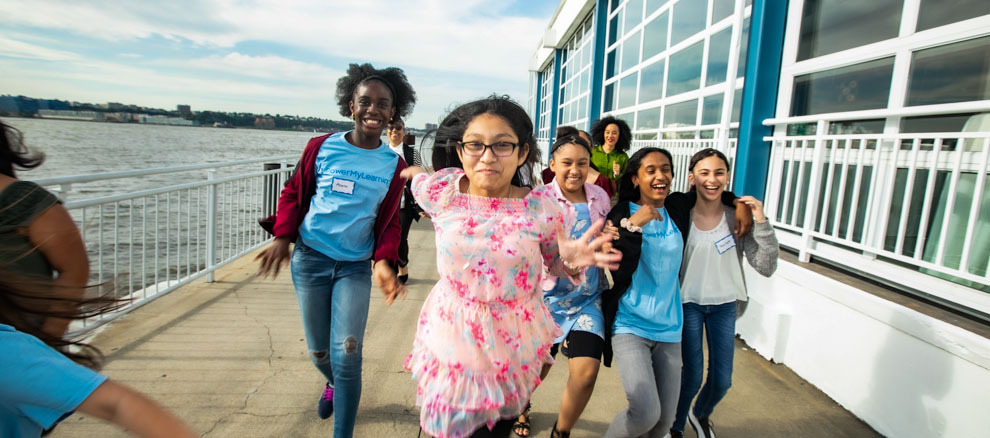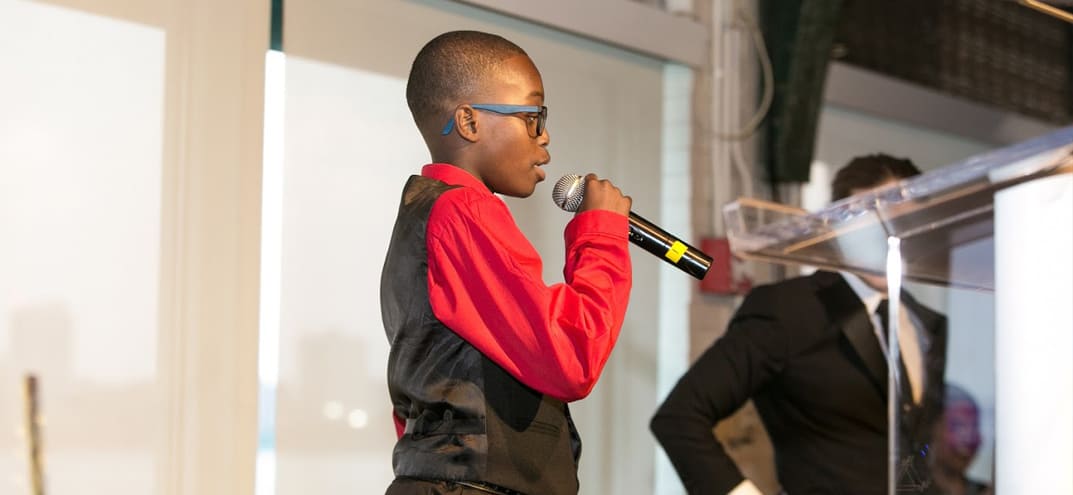How to Build a Strong Classroom Environment
When Mr. Freeman, a fourth grade teacher at Du Bois Integrity, began his first year of teaching last year, he experienced two challenges that are common to first-year teachers. Both these challenges related directly to his interest in making his classroom environment more conducive to personalized learning: (1) He needed to determine how to make the physical space work better: “My classroom set-up encouraged me to talk too much and my instruction was not student-driven”; and (2) He needed to figure out how to create clear and consistent routines: “I was very frantic. I was running around the classroom, all over the place, almost as if I didn’t have any focus.”
I sat down with Mr. Freeman to learn about how PowerMyLearning helped him overcome these two challenges and transform his classroom environment to one that supported personalized learning. My interview with Mr. Freeman for this month’s column kicks off a multi-part series about PowerMyLearning’s Framework for Teachers starting with the domain: Classroom Environment.
A few weeks into his first year teaching English Language Arts and Social Studies, Mr. Freeman started working with Shonvietta “Shon” Murphy, a PowerMyLearning coach who used PowerMyLearning’s Framework for Teachers to guide their work together. Mr. Freeman explained that from the very beginning, the partnership empowered him to work “smarter not harder” and helped fuel the transition he was seeking from a teacher-centered classroom into a student-centered classroom.
Elisabeth: How did Shon help you change the structure of your classroom so that it would be more student-centered?
Mr. Freeman: If I go back in time to how my classroom was set up before Shon came in, it was really traditional. It was set up similar to how I was taught when I was younger. Everyone had an individual desk, all desks were facing the board, and it was teacher-centered–pretty much teachers lectured, students listened, students would have their independent time to themselves, and then the teacher would go over everything. It was a very monotone style of teaching, very teacher-centered.
Shon taught me how to create stations in my classroom. Instead of having all the desks facing forward with students’ eyes on me, I created small groups of desks around the room with desks facing each other. If I had three stations, one might be a teacher-led station, one might be a collaborative station with papers, books and manipulatives where students can do a hands-on experiment or game–the kids can socialize and work together to complete an activity; and one might be for independent practice and include computers. During each lesson, students rotated from station to station and at every station, the activity changes and provides students a different way to work together.
Elisabeth: I hear that many upper elementary teachers frown on stations because they worry that when their students are not at the teacher-led station, they will not focus on learning. Did you feel that way?
Mr. Freeman: At first, I was skeptical. The main thing you think about is are they able to do it by themselves? Even though it’s a fear, the main thing is that you have to build trust. So, I started small. Initially, I separated my class into two large groups because it was more manageable for me. Once I got the hang of it, my two groups became four, and my four groups became the six groups that I work with now. After a lot of experimenting, I am now happy with where I have landed: six groups comprised of four students each rotating around my classroom.
Elisabeth: Six groups of four students each means you are basically tutoring when each group comes to you at the teacher-led station! What kind of support did you receive from Shon in how to structure your stations?
Mr. Freeman: Shon provided support about how to assimilate students into stations and excite them. For example, she suggested assigning students leadership opportunities, which I did. The role of a leader, which changes from station to station, is to relay my instruction. Each station has a card with instructions that the leader explains. The leader also designates other students’ roles and explains them so that everyone understand their job. By the end of the activity, the leader makes sure all tasks are completed, work turned in, and that every student is ready to move on to the next station or activity.
Elisabeth: How do you assign leaders?
Mr. Freeman: The way I assign leaders is fluid and can highlight a student’s level of comprehension on the subject or even a student’s interest. For example, if I’m working on an art activity that incorporates literacy, I may have a student who is an artist lead that lesson. They may not necessarily be great at writing, but they’re great at art so it’s a way to engage that student and have them actively participate. Without leaders at each station, you may have one talkative student who controls the entire conversation or a quiet student who always sits back.
Elisabeth: If I walked in to your classroom, is there anything that would surprise me?
Mr. Freeman: I know a lot of teachers prefer their classes to be silent where you can hear a pin drop. In my classroom, it’s not quiet. I prefer to hear my students talking because it enables me to do informal observation. I can hear what’s working well for them and what they’re having issues with. Sometimes it’s too loud and I’ll have to reign them in, but it’s worth it. I don’t want silence – silence means you may have some students working, and others who do not know what they’re doing and are afraid they’ll get in trouble if they speak.
Elisabeth: Speaking of students working together, how do you assemble your groups of students to accommodate their different learning styles and abilities?
Mr. Freeman: Last year, I started by grouping students in homogenous groups based on their ability. I delivered the same content but at different rates according the group level. However, this year I tried something new by introducing heterogeneous groups, mixing students of varying ability, which has proven more effective for this particular class. One of the biggest benefits is that you can actually hear students scaffold each other during peer work, which helps bring everybody up. Many times, students can explain the material to a struggling peer much better than I can.
Elisabeth: How does your relationship with Shon work?
Mr. Freeman: One thing about Shon is she’ll give me advice, but she’s not going to tell me how to run my classroom – she leaves that to me. She taught me that only I can create the environment that is best for my students to learn. She might give me a clue: for example, she told me I was doing too much by going to every station to deliver instructions, so she told me to leave a card them for them, and I did. She also told me that I needed to give students leadership roles, and let me determine how to do this. You see, Shon understands that, as teachers, we all have our own creativity and personality, and we want our classrooms to reflect that.
Elisabeth: What advice do you have for other teachers who are interested in creating a classroom environment that is conducive to personalized learning?
Mr. Freeman: You have to build trust with your students. I’m candid with my students. I know there are certain things that they do not want to do. I’ll ask them “What will make you enjoy your time in class?” and they’ll say the chance to talk or the opportunity to try new things. Okay, fair enough. So, I’ll say if you want to do this and you want the classroom built this way, then what I need from you is for you to concentrate on what you’re doing and accomplish it. This took some time. At first, I didn’t let them know which activity I was going to grade, so it made them take their time and concentrate on doing their work. Now, they get to an activity and know the routine so that they know exactly what to do and how to get through it.
Elisabeth: How has working with PowerMyLearning and Shon been different than other professional development you have experienced?
Mr. Freeman: Most PD opportunities simply provide tools or advice, but Shon and the PowerMyLearning team provided me with the framework and support that allowed me to grow as an educator, experiment, and generate my own solutions. Working with Shon was not a “one-and-done” experience. I was able to build upon my knowledge, and eventually my instruction became not only what Shon thought I should be doing, but what I want to be doing in my classroom.
Elisabeth: What are you most proud of in your work with Shon on classroom environment?
Mr. Freeman: Breaking down my class into groups has enabled me to differentiate instruction, and put more responsibility in my students’ hands. Honestly, it really just makes everything easier for me. I have my lesson plan, so I know what I need to do; the students know their roles and classroom routines so they know what they need to do. It puts more responsibility in their hands, and they actually enjoy that and work harder for me.
___
Over the years, it has been a wonderful privilege to partner with teachers like Mr. Freeman to support them as they transformed their classroom environments from teacher-centered to student-centered. As I shared earlier, “classroom environment” is the first domain of our Framework, so please join me next month for a Q&A on one of our other domains. And please don’t hesitate to share your stories with me about building an effective classroom environment! As always, I would love to hear from you.
This article originally appeared in PowerMyLearning’s March 2017 Newsletter. Learn more about PowerMyLearning by visiting our website and follow us on Facebook and Twitter.


